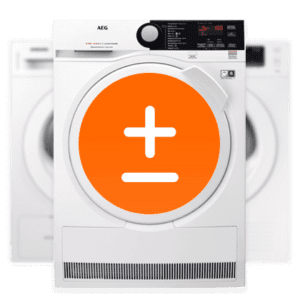Buy a clothes dryer, why and why not?
If you’ve just washed your clothes, towels and bedding, you have 2 choices. You can either put your laundry in the dryer or hang it on the clothesline. Both options have their advantages and disadvantages. If you are still in doubt about getting a new clothes dryer, here are the pros and cons of using one.
Dryer Advantages
- Your laundry will dry a lot faster if you use a clothes dryer. If you hang it up, it will take longer to dry.
- You will save time because you don’t have to hang it up. You put it in the dryer, and fold it when it is dry.
- No hassle with clothes racks. Not everyone has a clothesline in the garden or on the balcony, so your laundry ends up hanging inside. This takes up a lot of space and not everyone has room for it.
- Your washing comes out of the tumble dryer deliciously soft. When you hang it up, it often feels a lot harder and rougher. This can be particularly annoying with towels.
- Less chance of discolouration. The sun can be helpful in drying your clothes, but the sunlight will also make your clothes ugly faster. Drying in a tumble dryer eliminates this risk.
Disadvantages of a dryer
- Wash dryers are expensive. You can easily pay 300 euros to buy a new dryer, and this can go up to around 2000.
- Another disadvantage is the increased risk of wear and tear. By using a high temperature, dryers are bad for your laundry. With each wash cycle, lint is separated from your laundry, causing wear and thinning of the fabric. The fluff is collected in the fluff filter.
- A dryer takes up a lot of space. Dryers are large appliances. However, you can often fit the dryer on top of your washing machine. Do you have little space and have to buy a new washing machine and dryer? If so, you might want to consider a washer and dryer combination.
- High energy costs. Dryers use a lot of electricity and often result in higher energy bills. Hanging out your laundry, on the other hand, is free.
- Sunlight makes your laundry cleaner and whiter. The UV rays kill bacteria and act as a natural bleach that breaks down stains.
Buy a dryer, what to look for?
After reading the pros and cons above, have you decided that you want to buy a dryer? Well, great! Dryers make your laundry wonderfully soft and can save you a lot of work and time. However, there are a number of things you need to bear in mind when buying a new tumble dryer. The following tips explain exactly what to look out for when buying a tumble dryer.
Dryer type
There are several different types of tumble dryers. Before you buy a new dryer, it’s good to know what the difference is. The heat pump dryer is the most popular. Of all the types of dryers, the heat pump dryer is the quietest and most energy efficient. The heat pump dryer dries with the help of a heat pump and a coolant. This combination means that it dries at a lower temperature, which lasts longer and uses less energy.
The condenser dryer is also quite common. Condenser dryers use an electric heating element when drying, so they use more energy than heat pump dryers. In third place, you have the air-flow dryer. This type of dryer consumes the most energy. Dryers that use less energy than heat pump dryers are the most energy efficient, which is why we would not recommend purchasing a clothes dryer.
Condensation removal
Moisture is released when you dry your laundry, and it has to go somewhere. Dryers can do this in a number of ways.
- The water is led away via the water outlet. You connect the dryer to this with a drain hose. This is possible with most heat pump dryers and condenser dryers.
- The water is collected in a reservoir, also called a condensate pan. You should empty the tank into the sink after each drying cycle. Both condenser and heat pump dryers offer this option.
- The humid air is vented to the outside through a hose. This goes through a window or a hole in the wall. Of all the types of dryers, the heat pump dryer uses the least energy. Both for the environment and for your own energy bill, it is very beneficial to use less energy. That’s why we recommend buying an energy efficient heat pump dryer in almost all cases. How efficient a dryer is, you can see on the energy label. A dryer is energy efficient from energy class A++, but a new heat pump dryer with energy class A+++ consumes less energy. With an A++ heat pump dryer, you can save up to 75 euros per year on your energy bills – compared to an average condenser dryer. Although heat pump dryers are more expensive to buy, it is often cheaper to buy a more expensive, fuel-efficient one. However, not all retailers and suppliers are as transparent about the build quality, so you can also look at the brand and price range. According to the Consumers’ Association, these are the best brands for tumble dryers: Miele, Bosch, Siemens, AEG and Samsung. Beko, Indesit and Zanussi come out best in the test for price-quality ratio.

